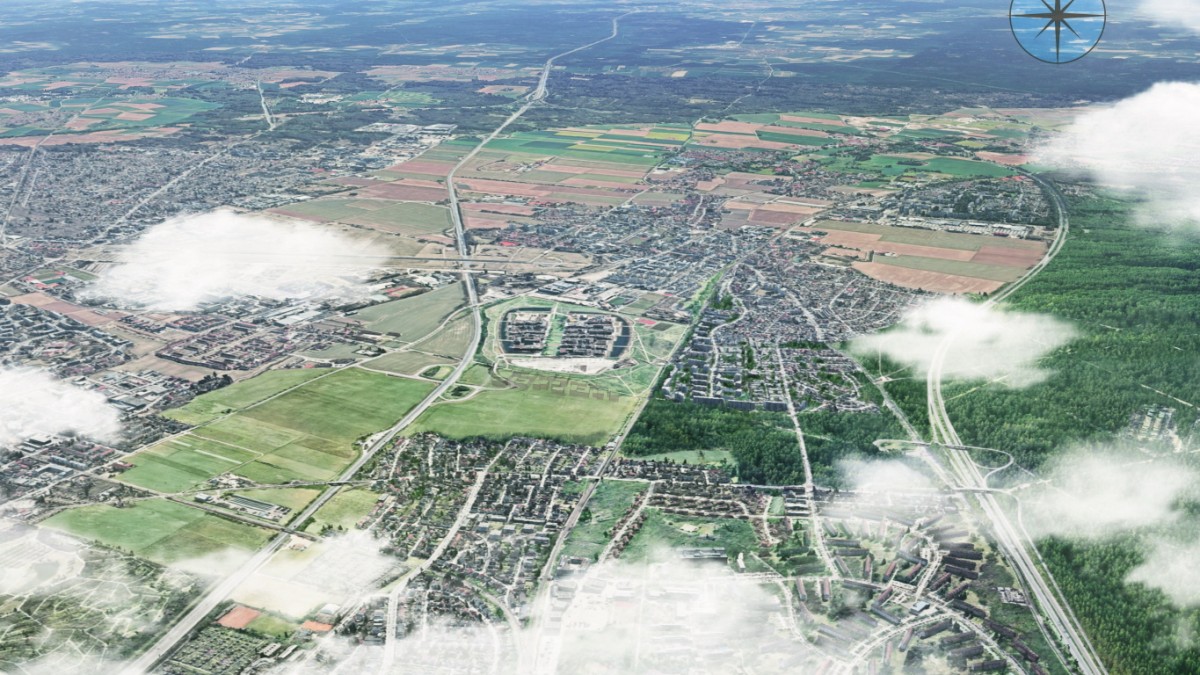For many years, Newburgh local councils have been grappling with the possibility of developing and using Church Field. Now nothing stands in the way of plans for a technology campus west of the A8 motorway. The local council approved it by a large majority on Monday, leaving only the Green Party group divided: while second mayor Kilian Körner and two friends of the party approved the plans, group leader Lucia Cote and three other Green Party members rejected the plan. One point of criticism: The planned development does not fit into the existing landscape.
The plan is for high-tech companies and startups to be located to the north of Infineon's headquarters, and for high-tech photovoltaic systems to be built on an agricultural area, and on the area up to the Munich city limits; To be a landscaped garden that will serve as a place for entertainment. The height of the buildings in the Tech Campus should be between 17 and 26.50 metres, with green roofs and photovoltaic systems already taken into account. They should be built using sustainable hybrid wood construction. Elements such as water and plants aim to create a pleasant atmosphere on the campus, and biodiversity is also sought in the landscaped garden.
At the meeting, experts again explained that the new plans also meet the requirements of the clean air corridor and the function of the regional green zone. This was the big criticism of previous plans: that the buildings could cut off the supply of fresh air to Munich and surrounding communities. The problem has now been solved, among other things, by reducing the building area to eight hectares in consultation with climate experts and moving it to the south. Trees should also be planted in a way that does not obstruct important cool air flows. The development plan process for Church Field will then begin. In addition, the land use plan should be changed accordingly. It also includes the area east of the highway to Hatchinger Bach. Retention areas will be created here for flood protection, and areas along the river will become local recreation areas.
The height of the buildings is less than the height limit
The four Green Council members were not convinced by this concept. Pascal Kollwitz-Jarnac made the mistake of noticing that the planned buildings fit into the landscape and wondered if they really wanted to “orient themselves towards Wasanenpark and Neuperlach”. Architect Maximilian Mayer explained that they looked at the structural heights in the area and essentially reduced the space. The height is below the high-altitude limit. According to Mayor Thomas Bardeler (CSU), the buildings are lower than residential buildings in neighboring Unterhaching.
Green council members also criticized the fact that transport planners only considered changes in car traffic, but could not provide figures for buses or S-Bahn. Lucia Cote said S3 has already reached its limits. “You don't need an expert's opinion for that.” The traffic planner agreed to provide the figures later, but it was not easy to get data on this from the MVV.
The area north of Infineon will be divided into three parts: a campus for high-tech companies, an agricultural area and elevated photovoltaic systems, and a landscaped park.
(Photo: Grabner Huber Lipp Landscape Architects and Urban Planners Partnership)
The Green Council members' criticisms were finally reflected in a personal statement in which they criticized “the re-closure of a previously undeveloped eight-hectare area in a highly environmentally sensitive area”. The project, called “Newberg Future Park,” does not take into account the future and upcoming challenges such as the consequences of climate change.
Party colleague Kilian Koerner represented the other side and emphasized what had been achieved thanks to green commitments. At the beginning of planning, people were still considering businesses on both sides of the highway, but concerns about the clean air corridor arose. Now you only plan to close the southern edge and you will get the desired arable land with a photovoltaic system as well as a landscaped garden that will be connected to the mile of the park. “In my view, we have a significant improvement across the board in almost all places,” Koerner said. He wished the investors economic success for the benefit of society. Rainer Hocherl, from the local Free Voters organisation, had earlier thanked them, saying that raising 800 million euros for the development alone was a business achievement. Mayor Bardeler spoke of an “important future project” including flood protection and commercial development in a high-tech park in the immediate vicinity of the German Army University.

“Certified tv guru. Reader. Professional writer. Avid introvert. Extreme pop culture buff.”







More Stories
Samsung Quantum Dot TV: Art meets technology
Pitch: €56m for energy startup Reverion
Plastoplan: Plastics for Energy Transition